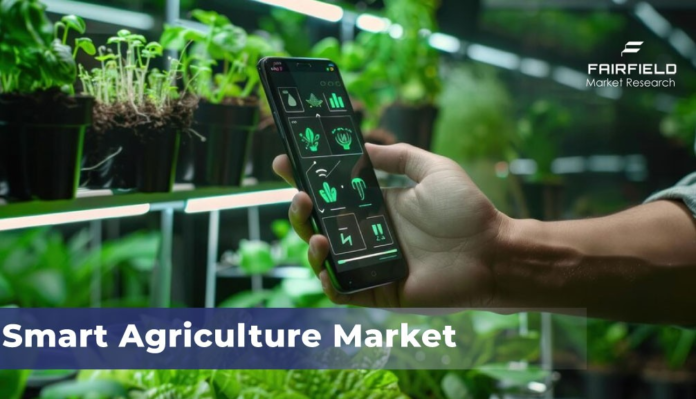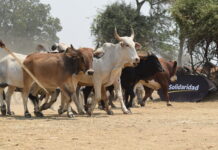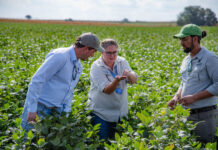The increasing demand for food, coupled with challenges such as climate change, water scarcity, and labor shortages, is fueling the rapid adoption of smart agriculture solutions. Smart agriculture leverages IoT, AI, drones, and big data analytics to enhance productivity, reduce resource wastage, and ensure sustainable farming practices.
Governments and private sectors are investing heavily in precision agriculture, automated irrigation systems, and AI-driven monitoring to tackle food insecurity. The growing consumer preference for organic and sustainably sourced food is further accelerating the adoption of smart farming technologies worldwide.
How Are IoT and AI Transforming the Agriculture Industry?
The integration of IoT (Internet of Things) and AI (Artificial Intelligence) is revolutionizing farming by providing real-time data and predictive insights. Here’s how these technologies are transforming the industry:
- IoT-enabled Sensors: These sensors monitor soil moisture, temperature, and humidity levels, ensuring optimal conditions for crop growth.
- AI-Powered Data Analytics: AI algorithms analyze historical weather patterns and predict the best farming practices to maximize yield.
- Smart Drones and Robotics: Drones equipped with multispectral imaging help assess crop health, detect diseases, and optimize pesticide use.
- Automated Irrigation Systems: Smart irrigation ensures efficient smart water management, reducing waste and increasing efficiency.
With AI-driven solutions, farmers can make data-backed decisions, reducing the reliance on traditional farming methods that often result in inefficiencies.
Why Is Precision Farming Gaining Popularity?
According to Fairfield Market Research Precision farming is emerging as a key trend in the smart agriculture market due to its data-driven approach to optimizing crop production. The method involves site-specific farming practices, ensuring that resources such as fertilizers, pesticides, and water are applied precisely where needed.
Key benefits of precision farming include:
- Higher crop yields through optimized farming techniques
- Reduced environmental impact by minimizing excess chemical use
- Cost savings for farmers by improving operational efficiency
- Real-time monitoring of soil health and weather patterns
As food demand continues to rise, precision farming is playing a crucial role in enhancing global food production while maintaining sustainability.
What Role Do Drones and Robotics Play in Smart Agriculture?
- Drones and robotics are game-changers in the smart agriculture industry. These technologies are helping farmers automate tasks, increase efficiency, and minimize labor costs.
- Crop Health Monitoring – Drones use multispectral imaging to detect crop diseases early.
- Automated Harvesting – AI-driven robotic harvesters speed up fruit and vegetable picking.
- Smart Spraying Systems – Precision drones target specific areas for pesticide application, reducing waste.
- Livestock Monitoring – Smart drones track cattle movements and detect illnesses in animals.
With advancements in robotics and AI, these technologies are becoming more affordable, leading to higher adoption rates among farmers worldwide.
How Is Smart Irrigation Addressing Water Scarcity Issues?
Water scarcity is one of the biggest challenges in agriculture, making smart irrigation automation systems essential for efficient water use. These systems use AI-powered analytics and IoT sensors to monitor soil moisture levels and deliver water precisely when needed.
Benefits of Smart Irrigation:
- Reduces water waste by up to 50%
- Prevents over-irrigation, which can damage crops
- Boosts crop health by ensuring consistent moisture levels
- Lowers operational costs for farmers
With rising concerns over climate change and water shortages, smart irrigation is becoming a necessity rather than a luxury.
How Are Governments Supporting Smart Agriculture?
Governments around the world are investing in smart agriculture technologies to improve food security and combat climate-related farming challenges. Policies and subsidies are being introduced to support digital transformation in agriculture.
Examples of Government Initiatives:
- The European Union – Funding precision agriculture projects through the Common Agricultural Policy (CAP)
- The United States – Investment in AI-driven farming research via the USDA
- China – Implementing smart farming technologies to meet rising food demand
- India – Promoting AI and IoT-driven solutions to help small-scale farmers
These initiatives are accelerating market expansion and encouraging farmers to adopt digital farming solutions.
What Are the Key Challenges Facing the Smart Agriculture Market?
Despite its rapid growth, the smart agriculture market faces several challenges that need to be addressed:
- High Initial Investment – Advanced farming technologies require significant upfront costs.
- Lack of Digital Literacy – Many farmers, especially in rural areas, struggle with adopting new technology.
- Data Privacy Concerns – The collection of farm data raises security and ownership issues.
Infrastructure Limitations – Poor internet connectivity in remote areas can hinder adoption. - To overcome these challenges, tech companies, governments, and agribusinesses must work together to make smart agriculture solutions accessible and affordable.
What Is the Future Outlook for the Smart Agriculture Market?
The future of smart agriculture looks promising, with continuous advancements in AI, IoT, and automation. Experts predict that the market will witness exponential growth, driven by the need for higher food production and sustainability.
Key Future Trends:
- AI-powered predictive analytics for improved crop management
- 5G-enabled smart farming for real-time data transmission
- Sustainable vertical farming using hydroponics and aeroponics
- Autonomous tractors and AI-driven robots for labor efficiency
- Smart water management to combat climate change impacts
With global food demand projected to increase, smart agriculture will play a critical role in ensuring food security while promoting eco-friendly farming.








